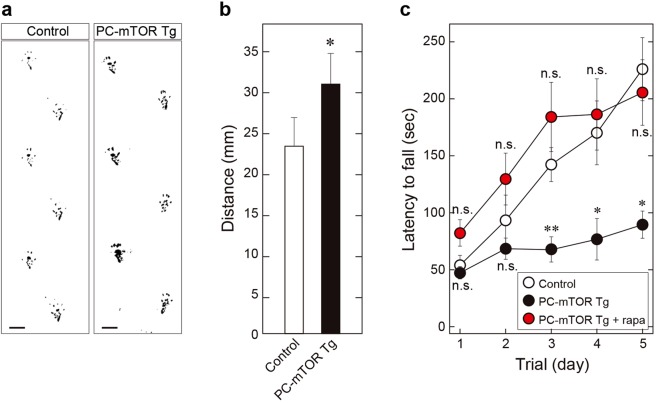Figure 4.
Gait analysis and rotarod test of PC-mTOR Tg mice. (a,b) Footprint patterns of control and PC-mTOR Tg mice. In PC-mTOR Tg mice, distance between left and right hind paw traces was significantly wider than the control, indicative of the ataxic gait. Scale bars, 1 cm. *p < 0.001 by Student t-test; control, n = 6; PC-mTOR Tg, n = 5. (c) Rotarod test of 6-week-old mice. An accelerating rotarod was used to measure the motor coordination and motor learning of mice. Retention time on the rotating rod was significantly lower in PC-mTOR Tg mice (close circles) then the control (open circles) over the course of multiple training days. Administration of rapamycin to PC-mTOR Tg mice drastically rescued the motor discoordination (red circles) without any significant differences from control mice. Values are mean ± SEM of three consecutive trials. *p < 0.001 and **p < 0.05 by two-way ANOVA with Tukey for both PC-mTOR Tg and PC-mTOR Tg + rapamycin compared to control; control, n = 5; PC-mTOR Tg, n = 6; PC-mTOR Tg + rapamycin, n = 5. n.s., not significant.

